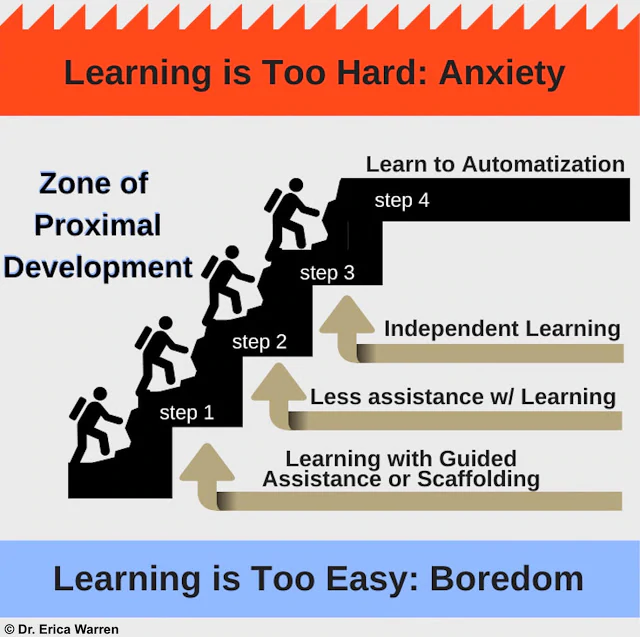Welcome back to my blog, Friends! We're getting closer and closer to putting all the pieces together and finally coming up with a Technology Integration Plan. The goal this week is to consider either student engagement or professional learning. I chose the latter so here are my thoughts.
Technology Integration for Learning
Professional Learning
Our district has, for the most part, relied on the age-old method of "sit and get" professional development for as long as I can remember. Then Covid19 happened and forced us to rethink our professional development delivery system. Recently, we have expanded our repertoire to include some video lessons and online support for teachers. In short, our technology professional development has been hit and miss at best. Gura (2018, pg. 73) suggests that..."unless it (tech PD) is tied to well-thought-out, focused goals and plans, it amounts to little more than activity for its own sake, even if it appears to be something needed or wanted at the moment." And that's where we currently find ourselves: struggling to reach our teachers and empower them through meaningful and authentic technology professional development that doesn't become "just another thing" in the long list of things teachers do. The bad news is our district doesn't currently have a formal Tech Integration Plan to guide our steps. The good news is our district has an Ed Tech Specialist who is a visionary and has the ear of our Superintendent of Schools. With that said, she has a vision and is making plans to increase her staff from two specialists (LSM and Makerspace) to include a "technology coach" specifically to support our district's elementary teachers. The next piece of good news is that the majority of our teachers are hungry to learn how to use technology in a manner that makes the most of what we have and that helps our students achieve success. We just need to develop a plan that accommodates a variety of learning styles, addresses a wide variety of available time commitments, and figures out how to entice all our over-worked and under-paid teachers to take part while doing so on a very limited budget.
Gura (2018, pg. 74) lists several methods (in addition to the traditional workshop method) that could be viable options to enhance our Ed Tech training:
- Coaching (We'll already have a tech coach onboard next year so this seems like a "no brainer".)
- Embedded PD (especially since we'll have a "tech coach" onboard next school year)
- Podcasts (We have the capabilities and the resources as well as someone on staff who produces podcasts on a regular basis.)
- PLNs (Professional Learning Networks) online and PLCs (Professional Learning Communities w/i the school setting)
I believe these to be viable options for our tech training/professional development because the groundwork has already largely been laid. And honestly, anything is worth consideration and a try because we all know what we've been doing isn't working; we need to evolve in our trainings/learning just as technology continues to evolve. I believe that these "new" training options will appeal to many of our teachers because the coaching and embedded pd can take place during school hours while teachers still work with their students. The podcasts and PLNs can take place at the teacher's convenience. And both of those methods capitalize on methods and platforms with which most teachers are already familiar.
Teachers are already making themselves part of professional networks as they connect to various Facebook groups, subscribe to various teaching blogs, and follow education influencers on Twitter and/or TikTok. Platforms such as these are less demanding on
teachers’ time because they can write or
respond to posts whenever they have free
time in their schedule. These sites also
provide a space for collective knowledge
building and sharing where teachers can
find support from large groups of individuals who pool their answers to find the
best solution to a problem. One online website that is worth consideration is the Educator's PLN. Although I've not joined it myself, several of my colleagues have joined and frequently share about the relationships they've developed while networking on that site. Edmodo is another education network worthy of a quick look-see.
For any professional learning activity to be successful, there must be buy-in and Gura (2018, p. 69) says as much. Because teachers are familiar with the previously mentioned platforms, they will have a certain level of comfort with them and will allow themselves to "buy in" to the offerings more readily. In planning for professional learning activities and networking opportunities, it is imperative that we consider what motivates teachers to learn, what feels authentic and meaningful to them, what fits in with their schedule and isn't just "another thing" to do. There must be real value that teachers can see in the experience where teachers can learn and grow with their practice. Teachers must feel as though they are part of the conversation and planning; their needs matter, and who better to talk about their technology needs than those who are in the trenches, so to speak, every single day?
Resources:
Gura, M. (2018). The EdTech Advocate's Guide to Leading Change in
Schools. International Society for Technology in Education.


